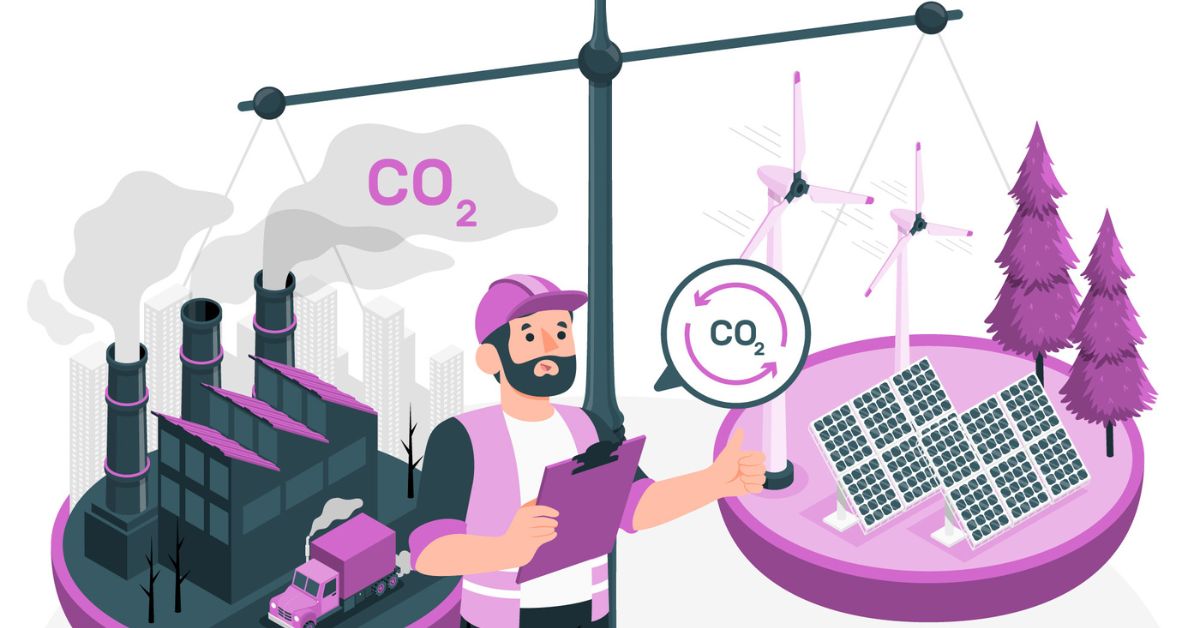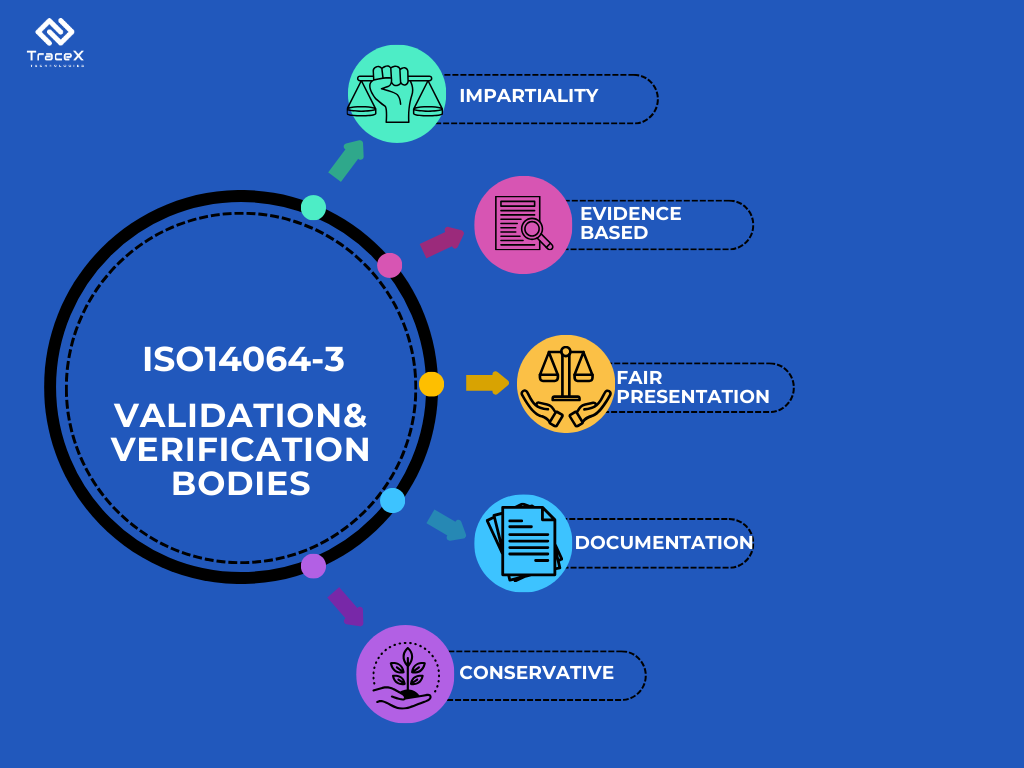Contact: +91 99725 24322 |
Menu
Menu
Quick summary: Discover how Verification and Validation Bodies (VVBs) can harness the power of TraceX DMRV blockchain solutions for seamless and transparent verification processes in carbon markets. Explore the benefits of integrating blockchain technology to enhance trust, accuracy, and efficiency in carbon offset projects.

The fight against climate change is a global battle, and carbon offset projects are emerging as a crucial weapon in this arsenal. These projects aim to reduce greenhouse gas emissions or remove existing carbon dioxide from the atmosphere, helping to balance the scales and mitigate the impact of climate change. But ensuring the legitimacy of these projects is paramount. Validation and Verification Bodies (VVBs) – the watchdogs are responsible for verifying the validity of carbon reduction claims.
Sea of paperwork, endless file folders overflowing with verification reports, audit trails scattered across different locations, and the constant worry about data inconsistencies. This is the reality for many Validation and Verification Bodies (VVBs) who play a crucial role in ensuring the integrity and sustainability of our agricultural supply chains. But what if there was a way to streamline this process, eliminate mountains of paperwork, and guarantee data security?
Global Demand for Voluntary Carbon Credits could increase by a factor of 15 by 2030 and a factor of 100 by 2050.
Enter TraceX DMRV, a revolutionary suite of solutions built on blockchain technology that empowers VVBs to conquer verification and audit nightmares. TraceX DMRV leverages the power of blockchain to create a secure, transparent, and efficient verification ecosystem, transforming the way VVBs operate.
Verra defines VVBs (Validation and Verification Bodies) as for-profit entities and organizations that undertake the validation and verification process. Validation involves assessing if a project complies with the VCS Program Guide and VCS Standard, while verification confirms that the project’s outcomes, as outlined in its documentation or reports, meet the quantification requirements specified by Verra.
Validation and verification play pivotal roles in upholding the integrity and calibre of projects enrolled in Verra’s programs and program methodologies. These processes are overseen by validation/verification bodies (VVBs) – independent third-party auditors endorsed by Verra. VVBs possess expertise in the program and sectoral scope or technical area they audit.
During validation, VVBs assess whether a project complies with all rules and requirements outlined by Verra Programs. Upon completion of validation, the project proponent may proceed to register the project with the relevant program.
During verification, VVBs validate that the outcomes outlined in the project documentation have been accomplished and quantified in accordance with the standards specified.
Designated Operational Entities (DOEs), as termed by UNFCCC, are accredited entities authorized to perform validation functions. These DOEs are accredited across different sectoral scopes and are eligible to seek project registration in their respective areas of specialization. These entities, also known as VVBs, are restricted to auditing or providing validation services within the designated sectoral scopes.
Upon completion of validation by one of the accredited VVBs, a project developer submits a Project Design Document (PDD) to Verra. Following successful validation, the project is registered and made publicly available on Verra’s register for public comment. Typically, after a year, a desk review is conducted to verify the data collected by the project developer, followed by interviews and, if necessary, field visits by auditors as part of the verification process. Once verification is finalized, the report is submitted to Verra, and the verified Carbon Credits Units (VCUs) are issued to the project developer. These VCUs are then available for sale to interested parties at undisclosed prices.
Gain insights into the process of carbon offsetting, from identifying emissions to investing in sustainable projects.
Explore the intricacies of the carbon offset cycle
According to Thallo, the impact of verification delays, could cost project developers up to $2.6 billion and mean 4.8 gigatonnes in undeployed credits by 2030.
Verifying carbon projects is no easy feat. Unlike a bag of coffee beans or a shipment of grain, carbon reductions are intangible and often involve complex calculations and monitoring across vast geographical areas. Traditional verification methods can be riddled with challenges:
These challenges create a significant roadblock in ensuring the credibility and effectiveness of carbon offsetting as a climate change mitigation strategy. But there’s a game-changer on the horizon: TraceX DMRV blockchain solutions. This innovative technology offers a powerful set of tools to empower VVBs and unlock a new era of transparency and trust in carbon project verification.
With unparalleled accuracy and efficiency, TraceX DMRV streamlines your carbon monitoring, reporting, and verification processes.
Unlock the power of TraceX DMRV for your carbon projects!
Digital Monitoring, Reporting & Verification (DMRV) is a system for tracking and verifying activities related to a specific project or process. In the context of carbon projects, DMRV focuses on monitoring activities that reduce greenhouse gas emissions.
TraceX leverages blockchain technology to create a secure and transparent DMRV system. Blockchain is a distributed digital ledger where information is recorded chronologically and securely across a network of computers. Each record, or “block,” is linked to the previous one, creating an immutable chain of data that cannot be tampered with.
This is particularly beneficial for VVBs verifying carbon projects as it offers several key advantages:
By leveraging TraceX DMRV, VVBs gain a powerful suite of tools to overcome the challenges of traditional verification methods. This not only benefits VVBs by improving efficiency and reducing costs, but also fosters greater trust and transparency in the carbon offset market, paving the way for a more sustainable future.
The carbon offset market holds immense potential in the fight against climate change. However, its effectiveness hinges on trust – trust that the projects genuinely deliver the promised emission reductions and contribute to a greener future. Here’s where TraceX DMRV, built on blockchain technology, emerges as a game-changer, fostering transparency and trust in the carbon market.
By addressing concerns about transparency and data integrity, TraceX DMRV paves the way for increased investment in high-quality carbon projects:
With TraceX’s innovative blockchain solutions, you can revolutionize carbon trading, ensuring transparency, security, and efficiency every step of the way.
Explore the potential of blockchain for the voluntary carbon market!
By fostering trust and transparency, TraceX DMRV can have a significant impact on achieving global climate change mitigation goals:

In recent years, there has been a collective endeavour to streamline carbon credit initiatives worldwide, aiming to balance supply and demand. Leading this movement are initiatives such as the ICVCM’s Core Carbon Principles focusing on the supply side, and the VCMI’s Claims Code of Practice addressing the demand side. Governments across various continents have also initiated regulations to govern their participation in carbon markets and their integration with domestic compliance markets.
Verra and Gold Standard are enhancing the technical capabilities of VVBs and national accreditation entities through targeted measures:
1. Providing specialized training sessions.
2. Implementing stricter project reviews to identify and address poor-quality projects at an earlier stage.
3. Fostering closer collaboration with accreditation entities.
By addressing and minimizing project verification delays within the VCM, the issuance speed of carbon credits could potentially be doubled.
In conclusion, VVBs stand to benefit significantly from leveraging DMRV Blockchain Solutions in their validation and verification processes. By incorporating blockchain technology into their operations, VVBs can enhance transparency, accuracy, and efficiency throughout the validation and verification lifecycle. TraceX DMRV Blockchain Solutions offer a secure and immutable record of transactions, facilitating seamless tracking and verification of project data. This ensures greater trust and confidence in the integrity of projects registered in Verra’s programs and methodologies. As VVBs continue to adapt to evolving industry standards and demands, embracing innovative solutions like DMRV Blockchain Solutions will be paramount in maintaining their credibility and effectiveness in the carbon market ecosystem.
